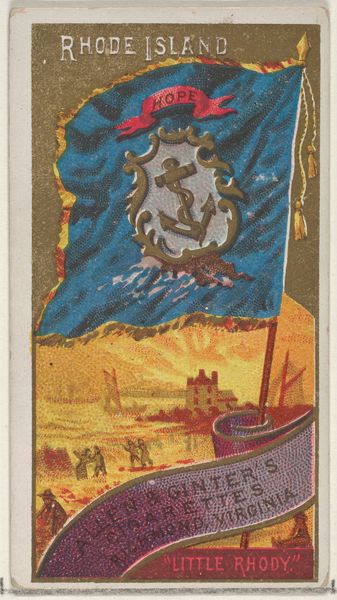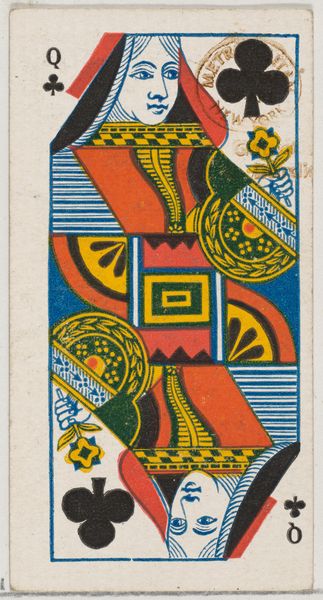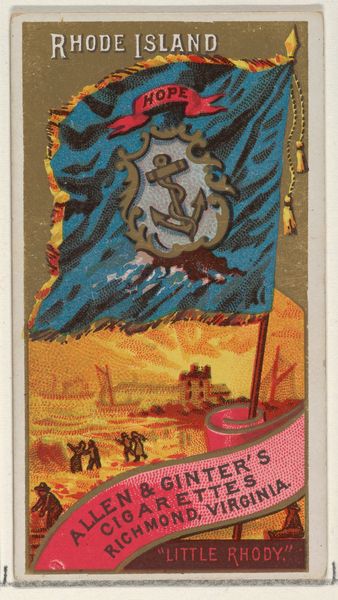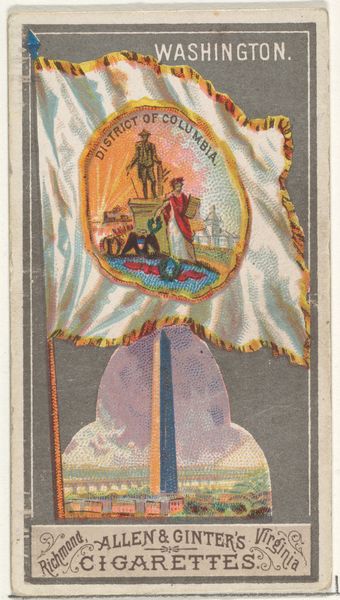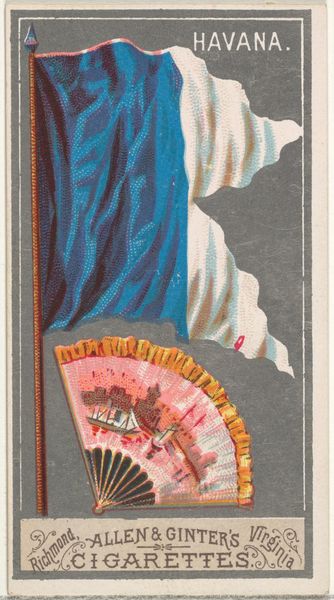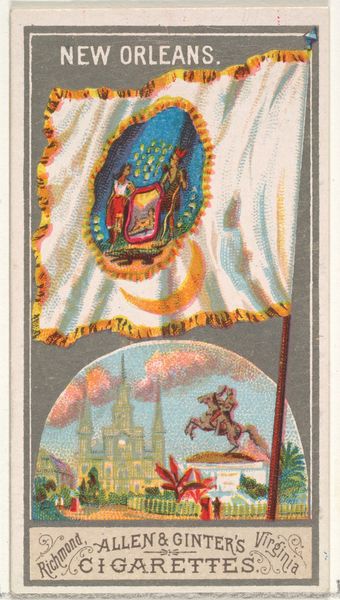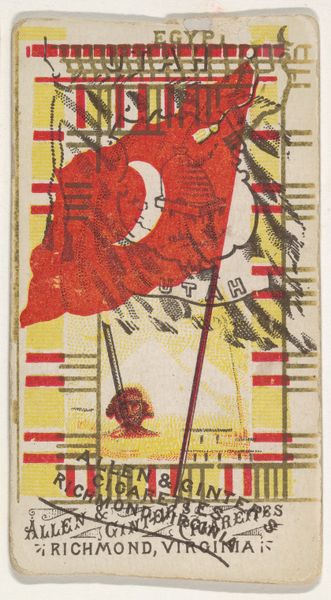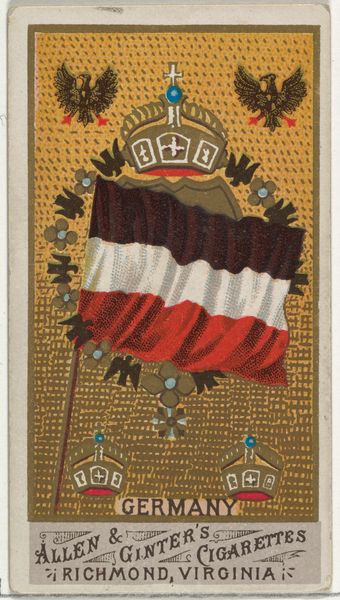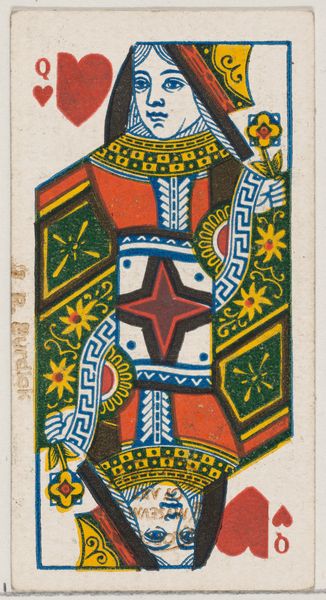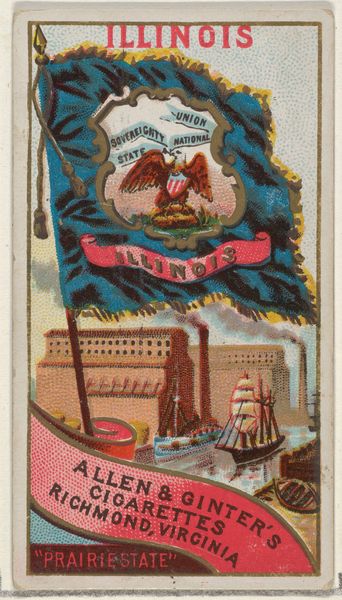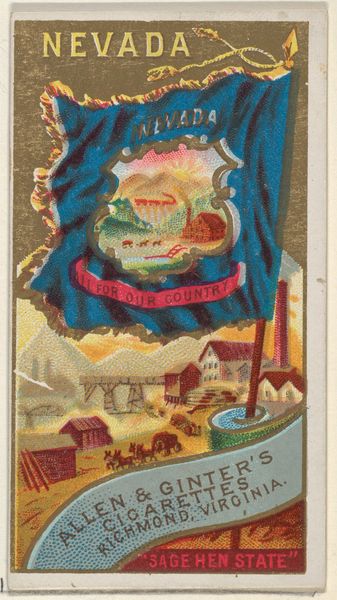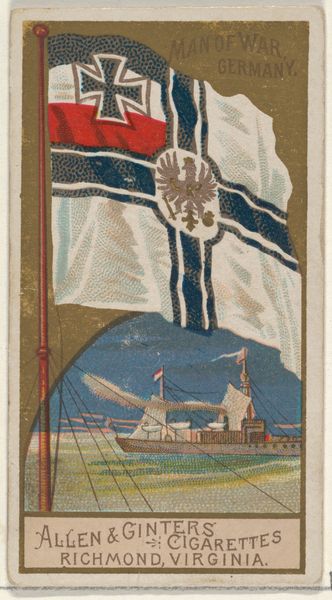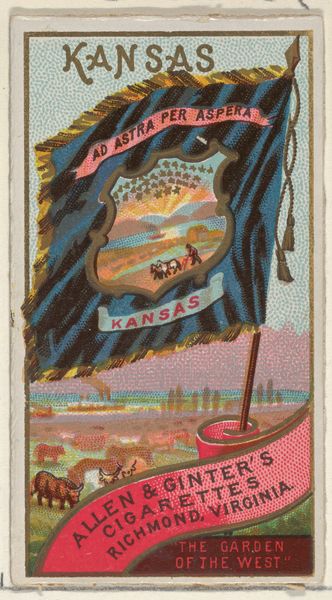
Korea, from Flags of All Nations, Series 1 (N9) for Allen & Ginter Cigarettes Brands 1887
0:00
0:00
Dimensions: Sheet: 2 3/4 x 1 1/2 in. (7 x 3.8 cm)
Copyright: Public Domain
Curator: Welcome. We’re looking at “Korea, from Flags of All Nations, Series 1 (N9) for Allen & Ginter Cigarettes Brands,” a print and drawing created around 1887. You can find it here at the Metropolitan Museum of Art. Editor: My first impression is surprise. The romanticized seascape at the bottom, peeking beneath the crisp rendering of the Korean flag—it feels like a scene from a dream, where cartography meets poetry. Curator: Indeed. The composition employs a rather sharp juxtaposition. The flag is rendered with remarkable geometric precision—note the bars around the central Taegeuk symbol and its clear contrast to the almost impressionistic treatment of the ocean view beneath. The Ukiyo-e influences certainly soften its impact. Editor: Ukiyo-e is a key phrase here. It makes me think about the filters through which we perceive other cultures, even on something as seemingly objective as a national flag. Look at the color palette—golds, faded reds, blues against the austere white—how might Allen & Ginter use this print to make Korea legible, alluring to a Western audience? I am also intrigued that they used a Bamboo to hold up the flag, which may have been informed by a misunderstanding about what the poles are made from? Curator: The use of “orientalism” as a visual language cannot be dismissed, especially considering the intended audience. Cigarette cards were instruments for promotion. I am curious, what do you make of the framing devices in play here? Consider the gold bordering the top portion as a backdrop and the arc that the artist employs, giving us glimpses of a boat on water, and a clear indication of horizon. The symbolism— the vessel juxtaposed with the flag, speaks to the theme of ‘nation’ as much as commerce. Editor: Absolutely. And that’s where the dream comes back for me. National identity sold by a cigarette company, distilled into potent imagery, bending reality into something hazy and exotic. It tells us about the dreams of both nations and commerce, about projections of identity, power, and, well, maybe even smoke and mirrors. It feels deeply resonant with where the world stands today in the age of the internet, no? Curator: Yes, that interpretation, although speculative, is persuasive. Looking again, there's more complexity here than first meets the eye. It reflects the multilayered relationship between cultures during this time, which the Allen & Ginter series aptly illustrates. Editor: An old tobacco card opens the door to worlds, both real and imagined. Now, that's the magic of art, isn't it?
Comments
No comments
Be the first to comment and join the conversation on the ultimate creative platform.
